Something went wrong!
Hang in there while we get back on track
Best attractions in Bologna
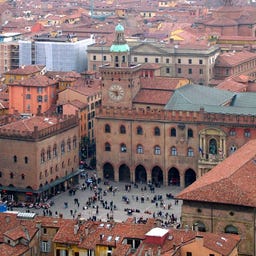
Piazza Maggiore, the heart of Bologna, is an essential stop on any visit. This lively square is surrounded by historic landmarks, including the Palazzo dei Banchi, the Palazzo del Podestà, and the magnificent Basilica of San Petronio. It's a favorite gathering spot for both tourists and students.
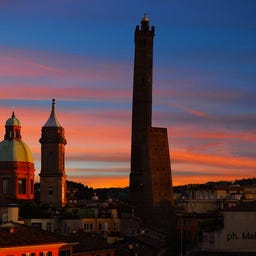
Everyone knows the Leaning Tower of Pisa. But have you heard of the Two Towers of Bologna? The Torre degli Asinelli and the Torre Garisenda are iconic landmarks of the city. The Torre degli Asinelli, impressive at 97.2 meters tall, is the tallest medieval leaning tower in the world.

The Quadrilatero district, conveniently located to the east of Piazza Maggiore, is a grid of compact streets around Via Clavature (Street of Locksmiths). This area is a must-visit for food enthusiasts and architecture buffs alike. Wander through narrow alleyways and tall archways and enjoy the lively atmosphere. This culinary haven is Bologna's oldest market, offering the best in Italian street food, regional wines, and homemade tortellini pasta. There are also a number of indoor markets including the Mercato di Mezzo.
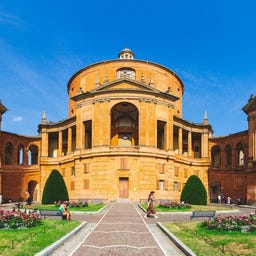
The Santuario Madonna di San Luca sits picturesquely atop the Colle della Guardia, offering stunning panoramic views of the city and the surrounding countryside. This Baroque basilica, dating back to the 18th century, is connected to the city by a unique arcade that stretches nearly four km, providing pilgrims with shelter from wind and weather.
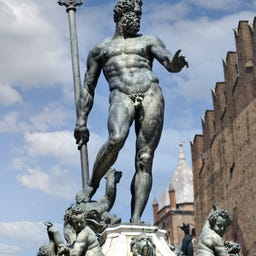
In the middle of Piazza del Nettuno in Bologna stands the impressive Neptune Fountain from the 16th century, which the locals affectionately call "the Giant." The structure, created by Tommaso Laureti and Giambologna, is topped by a bronze statue of the sea god that is over three meters tall, surrounded by intricate nymphs and water-spouting dolphins on a pedestal made of Veronese marble.
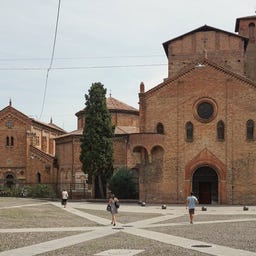
Basilica Santo Stefano, hailed as one of Bologna's most beautiful, is a complex of 7 churches spanning various historical periods. Referred to as Seven Churches (Sette Chiese) or Holy Jerusalem, this minor basilica on Piazza Santo Stefano boasts a labyrinth of interlocking structures, incorporating Romanesque, Lombard, and ancient Roman elements.
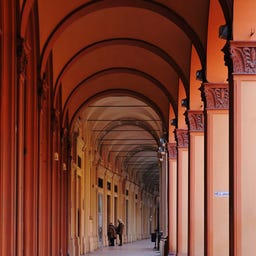
The porticos of Bologna, partially declared a UNESCO World Heritage Site in 2021, stretch over an impressive 62 kilometers and stand as a unique symbol of the city. Dating back to the 12th century, these arcades provide shelter from the sun and rain, playing an integral role in the daily life of Bologna's residents. Among them, the Portico di San Luca is particularly remarkable. Extending nearly 4 km with 666 arches, it holds the title of the longest portico in the world, guiding visitors from the city center to the pilgrimage church Madonna di San Luca.
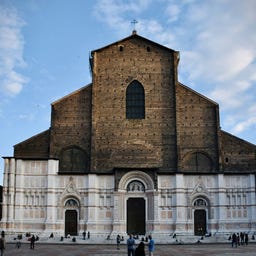
Located right next to Piazza Maggiore, the gothic Basilika di San Petronio dates back to 1390. Dedicated to Saint Petronius, the city’s fifth-century bishop and patron saint, the basilica features an incomplete facade that adds to its charm. Notably, Emperor Charles V chose this site for his 1530 coronation by Pope Clement VII. Inside, visitors can admire the basilica’s 22 side chapels and experience the enchanting sounds of its ancient organs, among the oldest still playable in the world.

The Basilica of San Domenico is considered one of the most beautiful churches in the city. A highlight is the Arca di San Domenico, a magnificent tomb for the founder of the Dominican Order, crafted by renowned artists like Nicola Pisano and the young Michelangelo. Inside, the church boasts masterful artworks and numerous chapels. Among these is the impressive Rosary Chapel, which features paintings by Guido Reni and frescoes by Filippino Lippi. Visitors can also admire three statues by Michelangelo: St. Petronius, St. Proculus, and an angel.
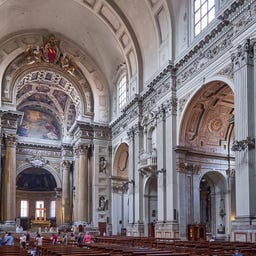
The Cattedrale di San Pietro has been the most important church in Bologna and the seat of the archdiocese since the 10th century. After a devastating fire in 906, it was rebuilt within the city walls and consecrated by Pope Lucius III in 1184.
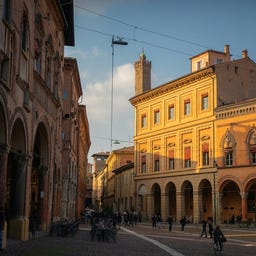
The triangular Piazza Santo Stefano, also known as Piazza delle Sette Chiese, is one of the most atmospheric squares in Bologna. Here, the impressive Basilica di Santo Stefano dominates the scene, while historic noble palaces like the Palazzo Bolognini Amorini Salina with its distinctive terracotta frieze surround you.
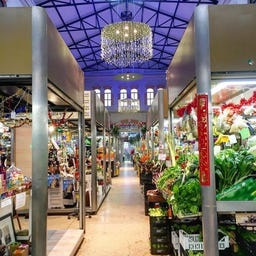
In the historic center of Bologna, you'll find the Mercato delle Erbe, a charming market hall from the early 20th century, designed by engineers Arturo Carpi and Gioacchino Luigi Mellucci, featuring a distinctive glass roof and a cross-shaped layout. After suffering heavy damage during World War II, the market reopened in 1949 and has since become a vibrant hub for fresh fruits and vegetables. Following a major renovation in 2014, you'll discover not only traditional market stalls but also numerous restaurants, bars, and snack spots all under one roof. Originally conceived as a temporary space for street vendors from Piazza Maggiore, the market has evolved into a popular meeting place for locals and visitors alike.
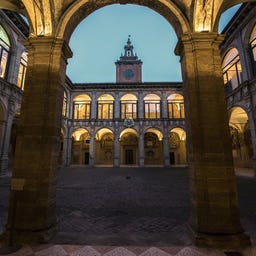
In the heart of Bologna's old town stands the Palazzo dell'Archiginnasio, which was built in 1563 as the main seat of the oldest university in Europe. Designed by Antonio Morandi, this Renaissance building houses the Anatomical Theater from the 17th century, one of the most fascinating historical lecture halls in Italy, which has been faithfully restored despite severe war damage.
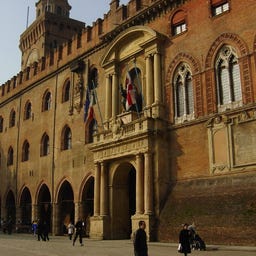
The powerful Palazzo d'Accursio has been overlooking the central Piazza Maggiore since the 13th century and still serves as the town hall of Bologna. With its richly decorated façade, the monumental portal by Galeazzo Alessi, and the famous terracotta Madonna by Nicolò dell'Arca, it is one of the city's most significant buildings.

With its impressive height of 97.20 meters and a western tilt of 2.23 meters, the Torre degli Asinelli is the tallest leaning tower in Italy. Built by Pietro Asinelli in the early 12th century, the tower was originally used for city observation before being taken over by the city of Bologna in the late 14th century and repurposed as a prison and fortress.

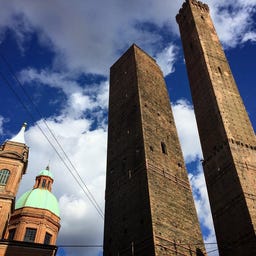
The leaning tower Torre della Garisenda, dating back to the early 12th century, is one of the most iconic landmarks of Bologna and stands alongside the taller Torre degli Asinelli in Piazza di Porta Ravegnana. Originally 60 meters high, 48 meters of the Garisenda family's structure remain today, leaning at an impressive angle of 4 degrees and overhanging by 3.22 meters.

In the heart of Bologna lies the Giardini Margherita, the city's most important green space, covering 26 hectares. Opened in 1879, the park is named after Queen Margherita and features beautiful English garden architecture with ancient oaks, linden trees, and magnolias, as well as a picturesque lake fed by the Savena River.
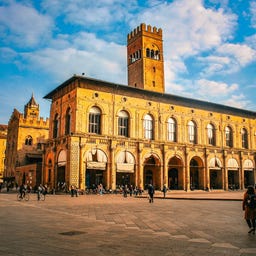
The Palazzo del Podestà has shaped the face of Piazza Maggiore, the central square of Bologna, since the 13th century. Originally a Romanesque administrative building, it was transformed in 1453 by Aristotele Fioravanti in the Renaissance style and impresses with its 47-meter-high bell tower, the Torre dell'Arengo.

At the Ducati Museum in Bologna, you can expect a fascinating journey through the history of the legendary Italian motorcycle brand. The exhibition, which opened in 1998, spans seven themed rooms and showcases significant motorcycle models as well as racing memorabilia from the company's history.
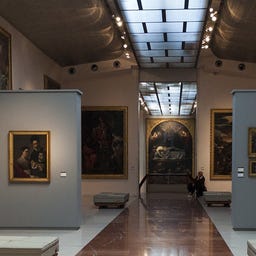
In the Pinacoteca Nazionale di Bologna, one of the most important national museums in Italy, you can expect an impressive collection of Emilian painting from the 13th to the 18th century. Housed in a former Jesuit novitiate, the museum features masterpieces by Giotto, Raffaello, and Guido Reni, providing a comprehensive insight into the art history of the region.
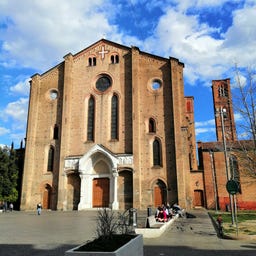
The majestic Basilica di San Francesco combines Romanesque and Gothic architecture into an impressive work of art since the 13th century, marked by its distinctive flying buttresses and the 48.5-meter-high bell tower, which is visible from afar.
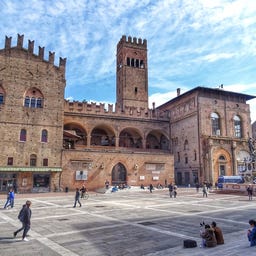
The Palazzo Re Enzo in the heart of Bologna is an impressive testament to medieval architecture from the 13th century, originally built as an extension of the Palazzo del Podestà. Its tumultuous history is closely linked to King Enzo of Sardinia, who was held captive here for 23 years until his death in 1272 - according to legend, even in a cage at night.
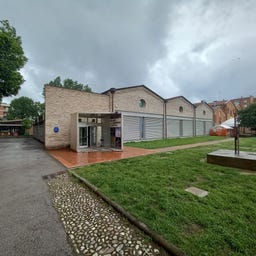
In a former tram depot in the Bolognina district, you will find a moving museum dedicated to the 81 victims of the Ustica disaster. The centerpiece of the Museo per la memoria di Ustica, which opened in 2007, is the reconstructed wreck of the crashed DC-9, surrounded by an impressive installation by artist Christian Boltanski featuring 81 pulsating lights and mirrors.
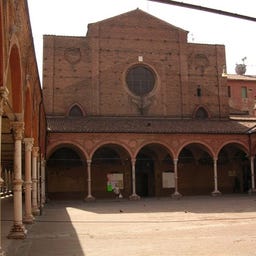
The Basilica di Santa Maria dei Servi, built by the Servites in the 14th century, impresses with its simple brick facade and the magnificent colonnade from the 19th century. Inside, you can expect significant artworks such as Cimabue's "Madonna with Child and Angels," as well as pieces by Guercino and Francesco Albani.
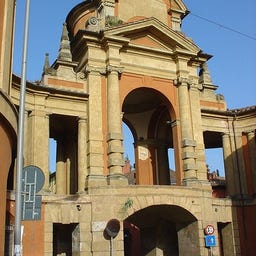
The Arco del Meloncello is an elegant Rococo arch from the early 18th century, located in the western outskirts of Bologna on Via Saragozza. As part of the famous Portico di San Luca, it was built between 1721 and 1732 by architect Carlo Francesco Dotti, who won the design competition in 1714.
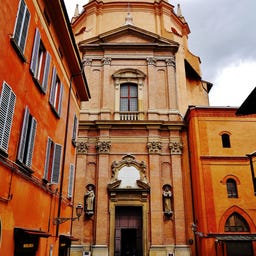
In the heart of Bologna, just a few steps from Piazza Maggiore, you will find the Santuario di Santa Maria della Vita, one of the most impressive examples of Baroque sacred architecture in the city.
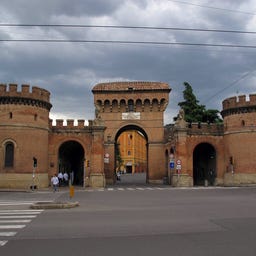
The Porta Saragozza, one of Bologna's historic city gates from the 13th century, welcomes you today with its distinctive architecture featuring cylindrical towers and a connecting portico. Since 1674, it has served as a significant starting point for processions to the Sanctuary of Madonna di San Luca, and it took on its current form after a major renovation between 1857 and 1859 led by Enrico Brunetti Rodati and Giuseppe Mengoni.
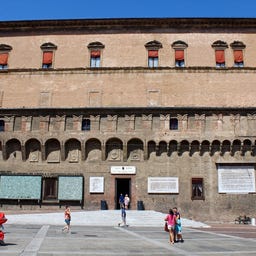
In the Biblioteca Salaborsa in the heart of Bologna, you will find one of the most modern media libraries in Italy, housed since 2001 in the historic rooms of the former Sala Borsa. With over 230,000 media items, including books, films, music, and digital offerings, the library has become a vibrant cultural center that attracts more than 1.2 million visitors each year.
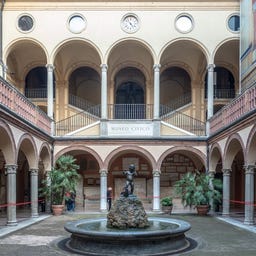
In the magnificent Palazzo Galvani from the 15th century, you will find one of the most significant archaeological collections in Italy. The museum, which opened in 1881, combines the historical collections of the university—dating back to the "Stanza delle Antichità" by Luigi Ferdinando Marsili from 1714—with the city’s collections. The Egyptian antiquities of European significance and the Etruscan section, featuring around 4,000 grave goods, are particularly impressive. The prehistoric collection dates back to the Lower Paleolithic, around 700,000 years ago, while numismatists can enjoy a collection of about 100,000 coins and medals.
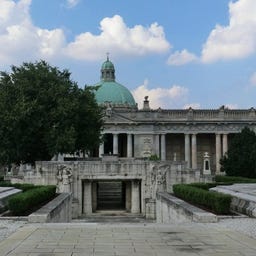
On a vast 30-hectare site, you will find the Certosa di Bologna, one of the most significant cemeteries in Europe, which has been the city's only burial place since the early 19th century.
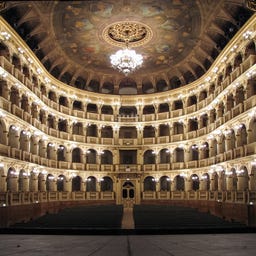
In the magnificent Teatro Comunale, which opened in 1763 with Christoph Willibald Gluck's opera, you will find one of Italy's most traditional opera houses, featuring its characteristic bell-shaped auditorium and four tiers of boxes.
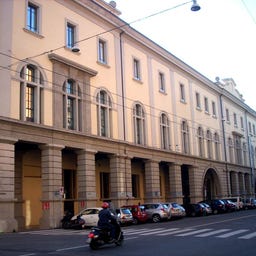
In the former city bakery from 1915, you will find the MAMbo, Bologna's most important museum of modern art. The museum complex, which opened in 2007 in the cultural district Manifattura delle Arti, traces its roots back to the municipal art gallery established in 1925 thanks to a generous donation from Countess Nerina Armandi Avogli.
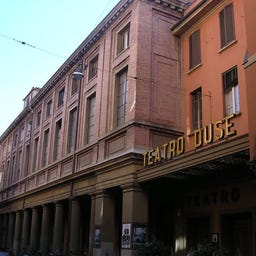
In the historic Teatro Duse, one of the oldest theaters in Bologna, you can expect an impressive venue with nearly 1,000 seats and a rich history dating back to the 17th century.

In the Palazzo Fava, a medieval city palace in the heart of Bologna, you will find one of the most significant art collections in the city. Acquired and redesigned by the Fava family in the 16th century, the palace features three magnificent rooms adorned with frescoes by the Carracci family from 1584.
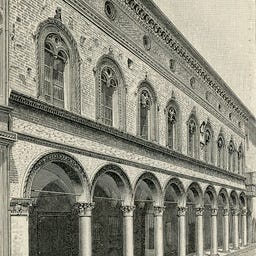
In the magnificent Palazzo Pallavicini from the 15th century, you will find one of the most impressive ballrooms in Bologna, featuring the tallest lantern in the city. Originally known as Palazzo Alamandini, this noble residence underwent extensive renovations in 1680 and was adorned with stunning frescoes by Giovanni Antonio Burrini.
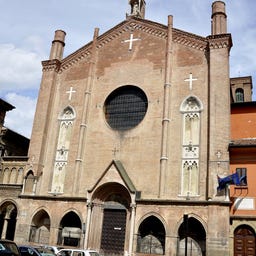
In the Basilica di San Giacomo Maggiore, you will encounter a fascinating blend of Romanesque, Gothic, and Renaissance architecture that has shaped the skyline of Bologna since its founding in 1267. The centerpiece of the church is the magnificent Bentivoglio Chapel from the 15th century, adorned with significant Renaissance artworks like Lorenzo Costa's "Madonna with the Bentivoglio Family."

In the heart of Bologna stands the Palazzo Albergati, an impressive Renaissance building from the early 16th century, commissioned by the family of the same name in 1519. In the magnificent rooms, you will find intricate stucco work and frescoes by notable artists like Francesco Gessi and Bartolomeo Cesi, while the courtyard features a Roman garden from the 1st century. After a devastating fire in 2008 and extensive restoration, the palace now serves as a venue for changing art exhibitions. It was also once home to the famous musician and composer Maria Brizzi Giorgi, whose salon was one of the cultural focal points of the city.
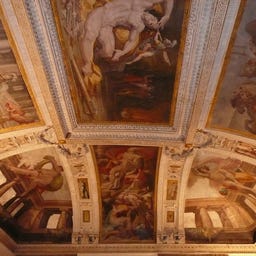
In the magnificent Palazzo Poggi from the 16th century, you will find today the main headquarters of the University of Bologna along with its rectorate. The palace, built between 1549 and 1560 as a residence for Alessandro and Giovanni Poggi, impresses with its frescoes created by Pellegrino Tibaldi and houses several noteworthy museums.
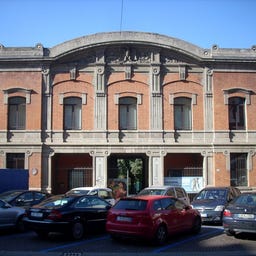
At the Cineteca di Bologna, one of the most important film archives in Europe, you can dive into the fascinating world of cinema. Founded in 1962, this cultural center houses not only over 80,000 film reels and an impressive photo archive with more than 3 million images, but also the first Italian video game collection with over 5,400 titles.
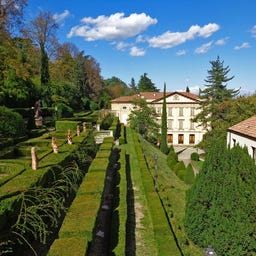
In the magnificent 18th-century villa, once built by Giovan Battista Martinetti for the Zambeccari family, you will find the Museum of Textiles and Tapestries today. The six-hectare park of Villa Spada is one of Bologna's most popular green spaces, featuring a formal Italian garden and impressive panoramic views of the old town.

Just two kilometers from Piazza Maggiore, you’ll find Villa Ghigi, one of the most beautiful public parks in Bologna, open to visitors since 1974. The expansive grounds, with a history dating back to the 17th century and acquired by Callisto Ghigi in 1874, present a vibrant mosaic of meadows, vineyards, orchards, and woodlands.

The Grand Tour Italia reopened in September 2024 as a theme park celebrating Italy’s culinary diversity. Some may remember the location as FICO Eataly World, which closed in 2024 due to financial difficulties. Now, visitors can explore the culinary and cultural richness of Italy’s 20 regions across 50,000 square meters. Alongside numerous restaurants and shops, the park offers events, workshops, and family-friendly activities.
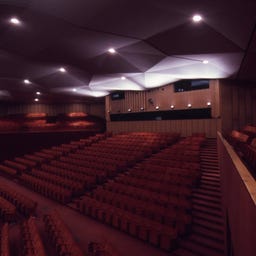
At the Palazzo della cultura e congressi in Bologna, you will find the largest theater in the Emilia-Romagna region, which has been run by the Vernassa family since its opening in 1975. Designed by architect Melchiorre Bega, the auditorium features a fan-shaped layout that accommodates 1,850 spectators and has become an important venue for musicals, theater, and dance.

In the historic Archiginnasio Palace, the first unified seat of the University of Bologna, you will find one of the most fascinating testimonies to the history of medicine: the anatomical theater built between 1636 and 1638, where medical students once learned their craft.
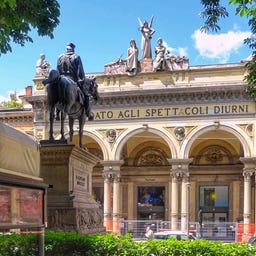
In the heart of Bologna, you will find the historic Arena del Sole, a theater that opened as an open-air stage in 1810 and is now one of the city's most important cultural centers. The impressive neoclassical facade by Gaetano Rubbi, adorned with sculptures by Alfredo Neri, dates back to 1888 and features the distinctive inscription "Luogo dato agli spettacoli diurni."
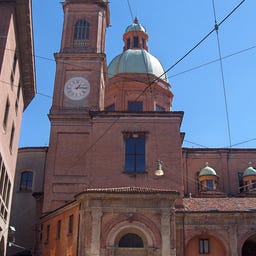
Right next to the famous Two Towers of Bologna stands the Chiesa dei Santi Bartolomeo e Gaetano, whose history dates back to the 5th century when Saint Petronius founded the first church here. The current Baroque structure was built in the 17th century under the direction of the Theatine order and impresses with its magnificent three-nave interior adorned with intricate frescoes by the Rolli brothers and Giacomo Alboresi.

In the magnificent Palazzo Sanguinetti, you will discover one of the world's most significant collections on the history of music from the 15th to the 17th century, which traces back to the impressive collection of Padre Martini. The richly decorated historical rooms house not only rare music prints—including the first music book ever printed—but also a remarkable collection of portraits featuring Mozart, Vivaldi, and other musical greats. Since 2004, the museum, formerly known as the Civico Museo Bibliografico Musicale, has brought together an extensive library with a fascinating collection of historical musical instruments spanning four centuries.
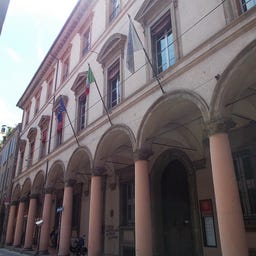
In the magnificent Palazzo Hercolani on Strada Maggiore, you will find an impressive example of Bolognese palace architecture from the late 18th century, which now houses the political science faculty. The building, designed by architect Angelo Venturoli in 1793 for Marquis Filippo Hercolani, skillfully combines neoclassical and baroque elements, with the monumental staircase featuring mythological stucco sculptures and the ceiling fresco "The Glory of Hercules" standing out in particular.

The Torre dell'Orologio in Bologna impresses with one of the largest clocks in Italy, featuring a dial that measures 6.40 meters in diameter. Built in the 13th century by the legal scholar Accursio, the tower was raised in 1451 and equipped with the distinctive clock that still strikes hourly today—and just to be safe, it strikes again a minute later.
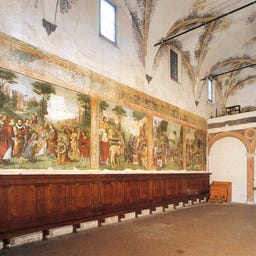
In the heart of Bologna, the Oratorio dei Santi Cecilia e Valeriano awaits you as an impressive testament to Renaissance painting, often referred to as the "Sistine Chapel of Bologna." Originally built in the 13th century, the structure was extensively redesigned in the 15th century and houses an exceptionally well-preserved cycle of frescoes from 1505-1506, created by notable artists like Francesco Francia and Lorenzo Costa.
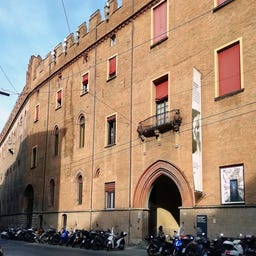
In the magnificent Palazzo Pepoli Campogrande, which is distinguished from the older Palazzo Pepoli Vecchio by its nickname "Nuovo," you will find one of the best-preserved aristocratic art collections in Bologna. Built in the 17th century by architects Giovanni Battista Albertoni and Giuseppe Antonio Torri for the Pepoli family, the palace impresses with its monumental staircase and stunning frescoes, including the "Apotheosis of Hercules" by Domenico Maria Canuti.

In the heart of Bologna, you will find the Giardino della Montagnola, one of the oldest green spaces in the city, located on an artificial hill made from the remnants of the Castello di Galliera. This 6-hectare park was designed in the early 19th century by Giovan Battista Martinetti and features a distinctive circular pathway system, highlighted by its magnificent Pincio staircase with a fountain from 1896.
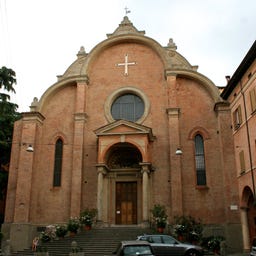
The Chiesa di San Giovanni in Monte impressively combines Gothic and Renaissance elements, with a history dating back to the 11th century. The striking facade designed by Domenico Berardi in 1474 was inspired by Venetian architecture, while the interior features three naves separated by octagonal columns that define the space.
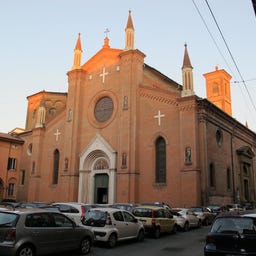
In the historic old town of Bologna, you will find the Basilica di San Martino Maggiore, which dates back to 1227 and has been cared for by Carmelite monks since 1293.

The Fiera di Bologna is the most important exhibition center in the region, covering an impressive area of 375,000 m² across 18 pavilions and five separate entrances. Since its official founding in 1927, the fair has continuously evolved, with the distinctive towers designed by Japanese architect Kenzō Tange in the 1970s being a prominent feature of the site.
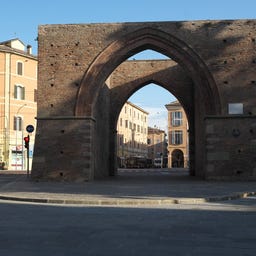
The Porta Maggiore, one of the most important historical city gates of Bologna, was first built in the 13th century as part of the third city wall and served for centuries as the main entrance to the city. In 1507, Pope Julius II reinforced the brick gate with a fortress structure, before it was completely rebuilt in 1770 by architect Gian Giacomo Dotti.

In the restored Fornace Galotti, a former brick factory from the late 19th century, you will discover the fascinating industrial history of Bologna from the 14th century to the present day. Founded in 1982, the museum showcases not only the historic Hoffmann kiln but also an impressive collection of packaging machines from the 1940s to the 1960s across 3,000 square meters.
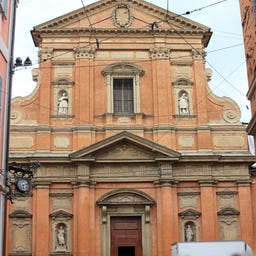
The Basilica di San Paolo Maggiore in the center of Bologna is an impressive example of Baroque sacred architecture from the early 17th century. Designed by Ambrogio Magenta and built between 1606 and 1611, the church captivates with its distinctive brick façade adorned with statues of saints and its magnificent interior featuring frescoes by the Rolli brothers.

In the Piazze Malpighi and San Domenico, you will find five impressive tombs from the 13th century dedicated to the most significant law professors of the University of Bologna. The magnificent mausoleums of Odofredo Denari, Rolandino de' Romanzi, Egidio Foscherari, Accursio, and Rolandino de' Passaggeri were built between 1265 and 1306 and reflect the high esteem in which these scholars were held, as they commented on Roman law as "Glossators."
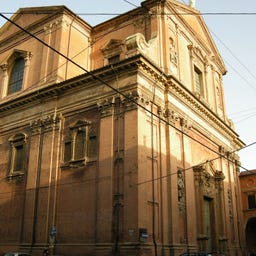
The Chiesa del Santissimo Salvatore combines late Mannerist architecture from the early 17th century with an impressive art collection, including works by Alessandro Tiarini and Vitale da Bologna.

The Porta Galliera, one of the historic city gates of Bologna's third city wall, welcomes you at the northern end of the old town near the main train station. Originally built in the early 13th century, the gate has been remodeled several times and now presents itself in a baroque style, adorned with two bronze faun reliefs from 1910.
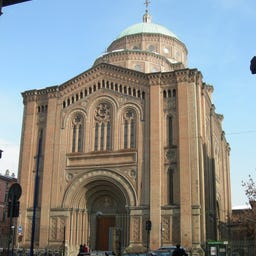
The impressive Chiesa del Sacro Cuore di Gesù welcomes you right at the main train station in Bologna with its striking 60-meter-high dome and the facade adorned with a mosaic of Jesus. Designed by Edoardo Collamarini in the early 20th century, this sacred building has withstood dramatic times, including the dome's collapse in 1929 and bomb damage during World War II. Inside, you will find 134 intricately designed stained glass windows by Antonio Maria Nardi, magnificent frescoes, and an impressive triptych at the main altar. With over 10,000 parishioners, this church, cared for by the Salesians, is now one of the most vibrant parishes in Bologna.
In this green retreat in the Santo Stefano district of Bologna, you’ll find 14.5 hectares of expansive lawns and old trees, protected from traffic noise by a dense hedge. The park was created from a former military facility from the 19th century and was transformed into a public green space in the 1970s based on plans by architect Paolo Bettini. Today, the Giardino della Lunetta Gamberini houses educational institutions as well as the vibrant Giorgio Bernardi sports center, where you can play basketball, tennis, and volleyball. The extensive area is accessible from several entrances on Via degli Orti, Via Dagnini, and Largo Lercaro.
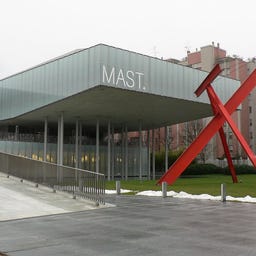
At the Manifattura di Arti in Bologna, you can expect a fascinating cultural center that spans over 25,000 square meters. This multifunctional building, opened in 2013, combines art galleries, an auditorium, restaurants, and an impressive sculpture park featuring works by artists like Ólafur Elíasson and Anish Kapoor.
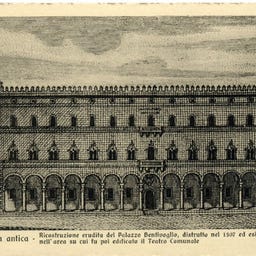
The magnificent Palazzo Bentivoglio, also known as the "Domus Aurea," dominated the skyline of Bologna in the 15th century with its gold-adorned facade and impressive dimensions of 30 by 140 meters. Inside the 244 rooms and five large halls of the palace, you could find precious frescoes by artists Lorenzo Costa and Francesco Francia.
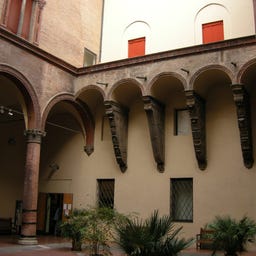
In the magnificent Palazzo Ghisilardi from the 15th century, you discover one of the most significant collections of medieval art in Bologna. The museum not only houses impressive tomb monuments from the 14th century but also precious crafts such as ivory work, ceramics, and a remarkable collection of oriental weapons from Luigi Ferdinando Marsili.
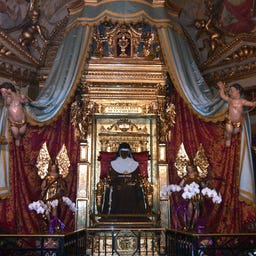
In the oldest Clarissan convent in Bologna, you rest today in the presence of the holy Catherine of Bologna, whose incorrupt body is laid out here. The Monastero del Corpus Domini, founded by her in 1456, impresses with its Renaissance façade and the magnificently Baroque church interior from the 17th century.
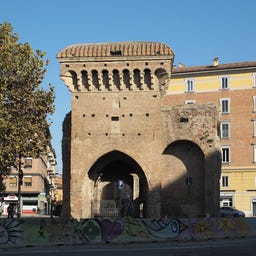
The Porta San Donato, also known as Porta Zamboni by locals, is part of Bologna's third city wall and has a rich history dating back to the 13th century. After its initial construction, the city gate underwent several renovations, including the addition of a drawbridge in 1354 and a refurbishment with a ravelin in the 15th century.
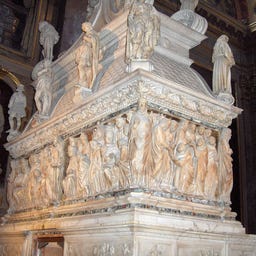
In the Basilica of San Domenico in Bologna, you will find one of the city's most significant works of art: the monumental tomb of Saint Dominic, the Arca di San Domenico. This masterpiece, begun in the 13th century, combines works from various periods and artists, including Nicola Pisano, Michelangelo, and Alfonso Lombardi.
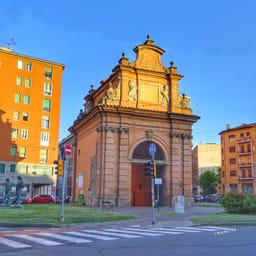
The Porta delle Lame, one of Bologna's historic city gates from the 13th century, marks the former transition between marshland and the city. Originally equipped with two drawbridges, the gate was completely rebuilt in Baroque style between 1674 and 1677.

The impressive Palazzo Davia Bargellini, dating back to the 17th century, stands out with its unusual facade that lacks the typical portico found in Bologna, instead flanked by powerful stone figures. Designed by Bartolomeo Provaglia, the palace was built between 1638 and 1658 for the Bargellini family and received a magnificent staircase with stucco decorations by Giuseppe Borelli around 1730.
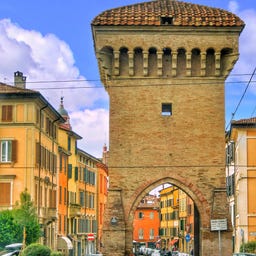
The Porta Castiglione is one of the twelve historic city gates of Bologna's third city wall and was built around 1250 from brick. Located at the intersection of Via Castiglione and the boulevards, the gate once benefited from its position by the Savena Canal, which supplied the city with water power. Between the 14th and 19th centuries, the structure was altered several times, losing its original form in 1378 and acquiring its current appearance in 1850. The most recent major restoration of this historic gate took place from 2007 to 2009.

Just a 10-minute walk from the center of Bologna, you will find the Eremo di Ronzano, a Catholic hermitage surrounded by ancient oaks, chestnuts, and cypress trees. The history of this place dates back to the Etruscans, with the first chapel founded in 1140 by the noble Cremonina Piatesi.

The Porta San Vitale is one of the historic city gates of Bologna's third city wall and was built in 1286 as an important gateway to Ravenna. Originally, the gate featured a prominent tower and a drawbridge, which were demolished in the 16th and late 18th centuries, respectively.

In the Chiesa dei Santi Vitale e Agricola in Arena in the historic center of Bologna, you step onto hallowed ground where Roman gladiators once fought. Originally part of a Benedictine monastery, the church took on its current form after renovations completed in the late 16th century, specifically in 1641.
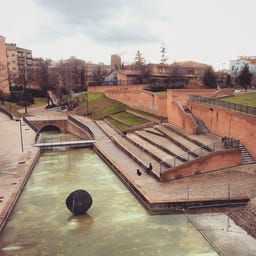
In the heart of Bologna, you will find the Parco del Cavaticcio, a green oasis that stretches across the site of the former medieval port. The name recalls a historical canal from the 13th century that once supplied water to mills and businesses.
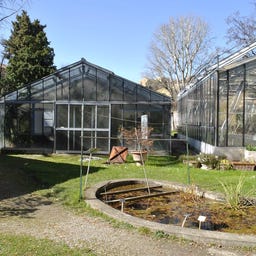
In the historic Orto botanico di Bologna, one of the oldest botanical gardens in Europe, you stroll through over 450 years of garden history - it was founded in 1568 by Ulisse Aldrovandi. On the expansive grounds, you can find about 5,000 plant specimens from over 1,200 different species, including specialized collections of tropical plants, succulents, and carnivorous plants.
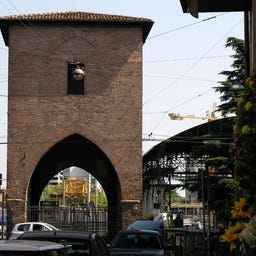
The Porta Mascarella is one of the best-preserved medieval city gates of Bologna's third city wall and still impresses today with its original brick appearance. Built in the 14th century, the gate was located on the important trade route to Ferrara and was named after the nearby village, which derives its name from a term for contract fraud.
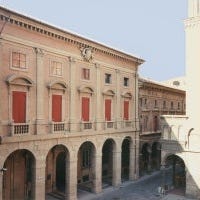
In the heart of Bologna, you will find the Palazzo Magnani, an impressive example of late Renaissance architecture from the 16th century. The palace, commissioned by Lorenzo Magnani in 1577, houses one of the city's most significant art treasures: a fresco frieze depicting scenes from the founding of Rome, created in 1590 by the Carracci brothers.
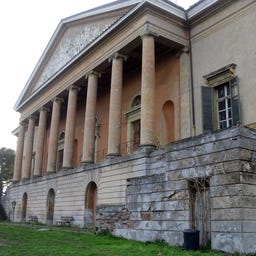
High above Bologna stands the Villa Aldini, an impressive example of Italian Neoclassicism from the early 19th century. The Napoleonic minister Antonio Aldini had it built between 1811 and 1816, inspired by a visit from Napoleon, who was captivated by the spectacular views in 1805. In the lavish interiors, you’ll find frescoes by Felice Giani and Neoclassical decorations, while the exterior is adorned with Giacomo De Marias's Olympic sculptures. The villa, which also houses the remains of the 12th-century Romanesque church La Rotonda, narrowly escaped demolition in 1842 and is now entering a new era of use.
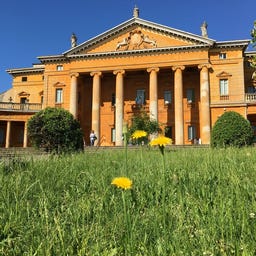
In the historic Villa Aldrovandi Mazzacorati in the Camaldoli district of Bologna, you discover a fascinating piece of Italian cultural history that has experienced a vibrant past, from a 17th-century agricultural estate to its current role as a cultural center.
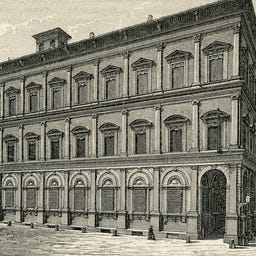
The impressive Palazzo Malvezzi De' Medici on Via Zamboni was built starting in 1560 based on designs by Bartolomeo Triachini and captivates with its three-story façade, which feels somewhat constricted by the narrow street. In the magnificent rooms of this noble palace, including the Sala dello Zodiaco and the Sala delle Ninfe, you can find not only 19th-century frescoes but also modern artworks by notable Bolognese artists like Bruno Munari. Once owned by the Malvezzi family, the palace now serves as the headquarters of the Metropolitan City of Bologna and houses, among other things, the Sala del Consiglio and a library in its historic halls.
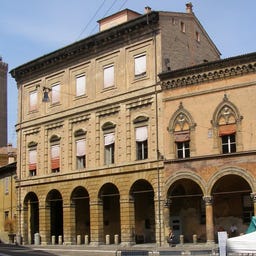
In the heart of Bologna, you will find the magnificent Palazzo Isolani, whose current facade was designed by Giuseppe Antonio Torri in 1708. Originally built in the 14th century, the palace impresses with its unique spiral staircase from the 16th century, attributed to the famous architect Jacopo Barozzi da Vignola.
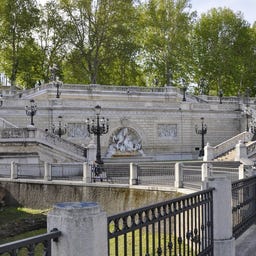
The monumental Scalinata del Pincio has connected the Giardino della Montagnola park with Piazza XX Settembre since 1896 and is one of the most impressive staircases in Bologna. Inaugurated by King Umberto I., the structure captivates with its three-part design featuring a main staircase and two arcaded walkways, along with intricate reliefs that tell the story of Bologna.
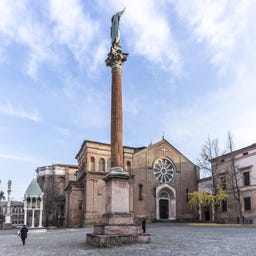
On the historic Piazza San Domenico in the heart of Bologna, you’ll find an authentic medieval square that still impresses with its original cobblestone pavement. This is where people once gathered to listen to the sermons of the Dominican monks.
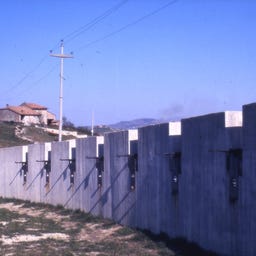
In the hills south of Bologna, you will find the Monumento di Monte Sabbiuno, one of the most significant memorials of Italian antifascism. Inaugurated in 1973, the monument commemorates around 100 partisans and political prisoners who were executed here by the Nazis in December 1944.
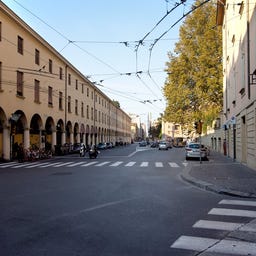
Piazza Malpighi is an important transportation hub in the historic center of Bologna, named after the notable 17th-century physician Marcello Malpighi. Located right next to the Basilica di San Francesco, the square is dominated by the impressive Colonna dell'Immacolata—a column created in 1638 by Giovanni Tedeschi, featuring a copper statue of the Madonna.
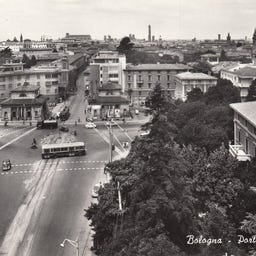
The Porta Santo Stefano, one of the historic city gates of Bologna's third city wall, has a rich history dating back to the 13th century. After suffering severe artillery damage in 1512 and undergoing several renovations, the monumental "Barriera Gregoriana" was built here in 1843 under Pope Gregory XVI, designed by architect Filippo Antolini.
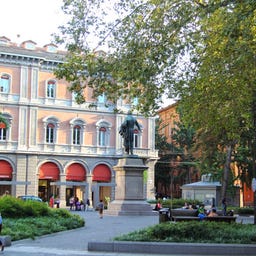
In the heart of Bologna's historic center, you will find Piazza Minghetti, a well-maintained garden square that was created in the late 19th century on the site of medieval buildings. The square is dominated by the impressive statue of the politician Marco Minghetti - a work by sculptor Giulio Monteverde from 1896, depicting the statesman in a rhetorical pose with his hat in hand.

In the magnificent Palazzo d'Accursio, the historic town hall located at the central Piazza Maggiore, you will find an impressive art collection on the second floor. The Collezioni comunali d'arte were established in 1936 and now house a diverse collection of paintings, sculptures, clocks, and decorative art objects from the Middle Ages to the 19th century.
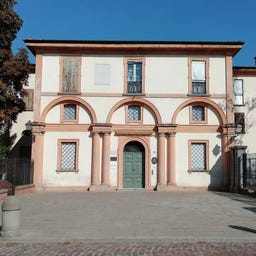
In this historic building from the early 16th century, which originally served as a church, the significant Italian poet Giosuè Carducci spent his last years from 1890 to 1907.

The Palazzo dei Banchi has shaped the east side of the Piazza Maggiore, the central square of Bologna, since the 16th century. The architect Jacopo Barozzi, also known as Vignola, designed the harmonious facade between 1565 and 1568 to give the square a unified appearance.
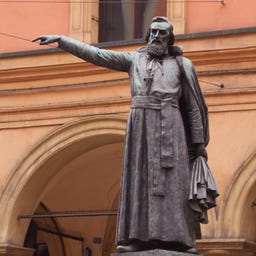
At the intersection of Via Ugo Bassi and Via Nazario Sauro, you will find the bronze statue of the patriot Ugo Bassi, created in 1888 by the sculptor Carlo Parmeggiani. The monument has a tumultuous history: originally placed in front of the Arena del Sole, it was moved several times, including due to the Garibaldi Monument and the bombings during World War II. After a thorough restoration in 2003, the statue now stands again at its original location on Via Ugo Bassi, serving as an important cultural landmark that commemorates the legacy of the religious freedom fighter.
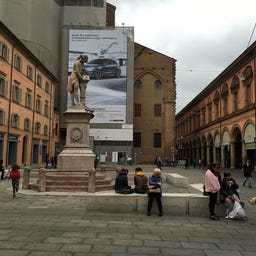
In the heart of Bologna's historic center, you will find Piazza Galvani, a place rich in history located in front of the apse of the Basilica di San Petronio. Originally used as a silk market in the 15th century, the square took on its current form with the construction of the magnificent Archiginnasio in 1563.

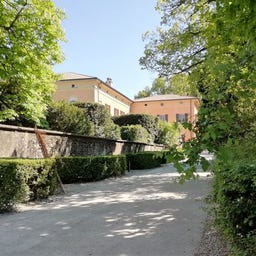
The magnificent Villa Guastavillani from the 16th century was created by Cardinal Filippo Guastavillani, who had it built as his residence in 1575. In the four-story building, you will find impressive frescoes on the walls and ceilings of various rooms.
